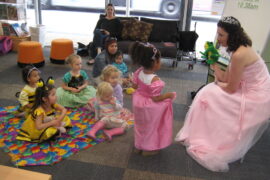Discover the Magic of Australian Animals: A Parent’s Guide to Down Under Wildlife
Oh, the wonders Down Under! Hello, adventurous parents and curious kiddos! Are you ready to hop, crawl, and leap into the fantastic world of Australian animals? This continent is not just about sun-kissed beaches and the vast Outback; it’s also home to some of the most intriguing creatures on the planet. What makes Aussie animals so special, you ask? Well, it’s a thrilling blend of exotic, unique, and downright adorable wildlife that can’t be found anywhere else in the world!
Whether you’re planning a family trip to Australia or looking to ignite your child’s love for nature from home, you’ve come to the perfect place. Our guide will take you on an educational walkabout through the habitats and lives of Australia’s most captivating animals. So, grab your virtual binoculars, and let’s embark on an unforgettable journey!
What Makes Australian Animals Unique?
Australia’s isolation from other continents has crafted a secluded wonderland for wildlife. As a result, Australia boasts a high number of endemic species – those found nowhere else in the world! Strict quarantine laws help to protect this delicate balance of nature, preserving the uniqueness of the Aussie ecosystem.
Kangaroos – The Bouncing Icons

Let’s start with one of Australia’s most iconic animals – the kangaroo. These bouncy marsupials are not only a symbol of Australia but also a must-see for any wildlife lover. Fun fact: Did you know kangaroos can’t walk backward? Their muscular tails and strong hind legs propel them forward in impressive leaps!
Koalas – The Cuddly Tree-Huggers

Next up, the charming koala. Often mistaken for a bear, this marsupial is actually more closely related to wombats. Koalas spend most of their time snoozing in eucalyptus trees and munching on their leaves. Remember, though adorable, koalas are wild animals, so observing them from a distance is best!
Platypus – The Peculiar Paddle Tail

Ever heard of a duck-billed, beaver-tailed, otter-footed animal that lays eggs? Meet the platypus, one of the only two monotremes (egg-laying mammals) in the world. This shy creature is a marvel of evolution, and spotting one in the wild is truly a memorable experience.
As you explore Australia’s wildlife with your little ones, remember to always approach animals with respect. It’s essential to keep a safe distance, not only for our safety but to protect the animals and their natural habitats.
The Enchanting Habitats of Australian Wildlife
Australia’s landscape is as diverse as its wildlife, ranging from lush rainforests to arid deserts. Each habitat provides a unique backdrop for the lives of these Australian animals.
The Bush and the Outback
The Bush and the Outback are terms often used to describe the Australian wilderness. The Bush mainly refers to areas close to urban centers with dense vegetation, while the Outback is the vast, remote interior of the country. These regions are home to animals like the dingo, Australia’s wild dog, and the adorable quokka, often deemed the world’s happiest animal due to its smile-like expression.
Exploring the animal kingdom of Australia can be an invigorating addition to your child’s learning adventure. Stay tuned for more captivating facts and stories as we dive deeper into the habitats, behaviors, and conservation of Australia’s unique wildlife. Together, we will foster a sense of wonder and respect for nature in our children’s hearts, one Australian animal at a time.

5 Things Parents Should Know When Preparing for a Wildlife Adventure in Australia
1. Safety: The Top Priority
Remember that while Australian animals are exciting to watch, they are still wild. Teaching your kids about safe wildlife practices is crucial. Always follow park guidelines, stay on designated paths, and never feed or attempt to touch wild animals. Equip your family with information on what to do if you encounter animals such as snakes or spiders, which can be venomous.
2. Best Time to Visit for Wildlife Viewing
Timing is everything! Plan your visit during seasons when animals are most active. For example, the cooler months of the year (April to September) often offer better chances to observe wildlife as many animals are less lethargic and more visible during these periods.
3. The Right Gear for an Aussie Adventure
Equip your family with comfortable waterproof walking shoes, sun hats, high-SPF sunscreen, and insect repellent. Binoculars are a bonus for keen wildlife spotters and can help children observe animals without disturbing them. Don’t forget a camera with a good zoom lens to capture those incredible wildlife moments from a safe distance!
4. Respect the Environment
Educate your children about the importance of conservation. Make sure to leave habitats as you find them, take all rubbish with you, and be mindful of water sources and plant life around animal viewing areas. Show your kids that the best way to enjoy wildlife is to ensure we do not harm their homes.
5. Wildlife Sanctuaries and Zoos: Educational Havens
While seeing animals in the wild is an unmatched experience, visiting wildlife sanctuaries and zoos can be safer and provide learning opportunities for children. These facilities often have educational programs designed for kids, allowing them to learn about animal behavior, conservation, and the importance of biodiversity in a controlled environment.
Planning a family adventure to witness the extraordinary wildlife of Australia is not only a journey into the world of marsupials and monotremes but an excellent opportunity for parents to instill a love and respect for nature in their children. With careful preparation, awareness, and a sense of adventure, your family is sure to have a remarkable experience exploring the fascinating and unique creatures of the land Down Under.
For more great fun click here. For more information see here
Disclaimer
The articles available via our website provide general information only and we strongly urge readers to exercise caution and conduct their own thorough research and fact-checking. The information presented should not be taken as absolute truth, and, to the maximum extent permitted by law, we will not be held liable for any inaccuracies or errors in the content. It is essential for individuals to independently verify and validate the information before making any decisions or taking any actions based on the articles.




